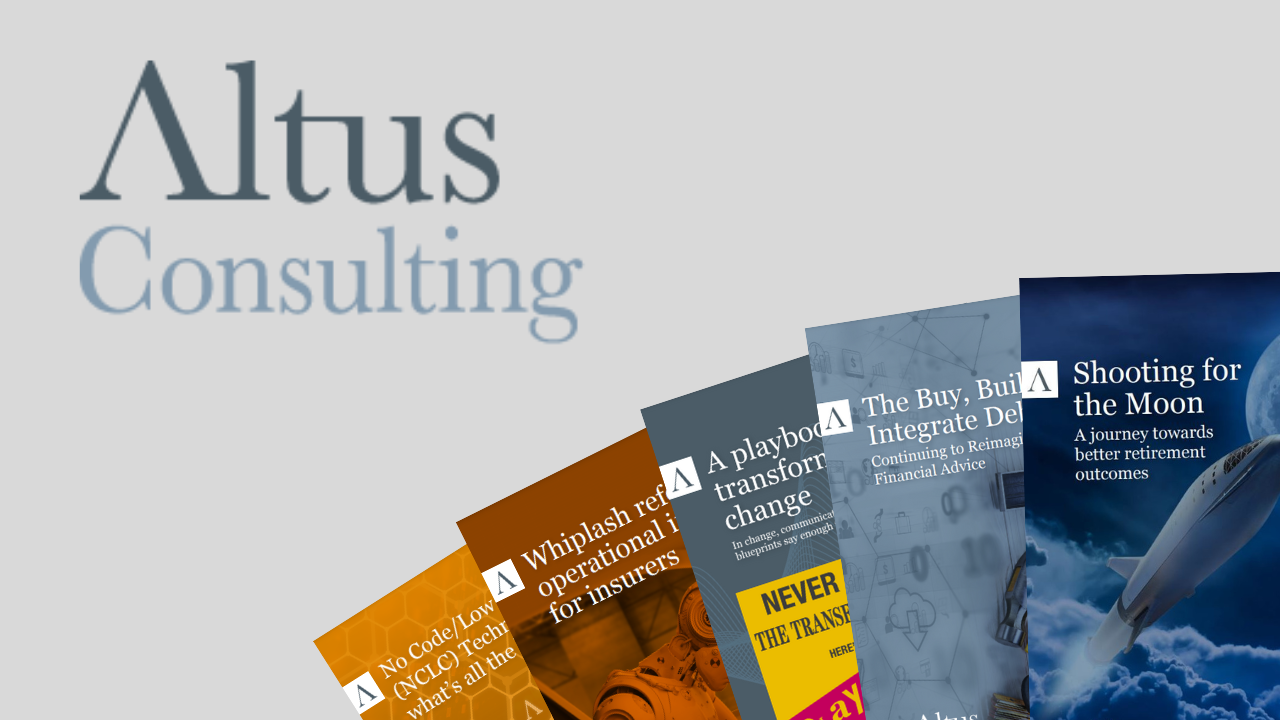Insurance has been one of the oldest users of technology from the early adoption of IBM mainframes in the 1960s and the continual challenge of adopting new technology as they develop but not risking the backbone that the older technology delivers.
I am not a technology historian, but have spoken to many involved in what was then the new dawn (my father included) and understood the size, literally of the challenge then, machines the size of rooms were powering and supporting the industry, or they were by those that adopted them. But as the 60’s eventually became the 80’s/90’s, any gaps in business operating models or routine tasks of data processing from the technology initially deployed were now filled with people and so it has remained until the last decade.
Things started to change around the noughties and the dot com revolution when new businesses, new business models and altered customer expectations started to really take shape. However, this new direction really only suited greenfield businesses who could build things with the available technology of the time taking into account both the capabilities available and the possibilities of a very different tomorrow, such as software as a service, cloud or utility computing power, direct online customer engagement etc. These opportunities were never lost on the multi trillion insurance sector, but throwing out the old technology to benefit from the new was never going to be easy with 100s of millions of customers and trillions of transactions requiring unaffected service levels. The industry, one that can adapt fast but charges slowly, was starting to awaken to the brave new world of becoming digital.
The world didn’t end in 2000 it changed direction
My own digital awakening started in 1995 working on one of the pioneering POCs for internet insurance trading, then watching the opportunities for what e-business was ultimately going to deliver (as it was referred to in the day) but the planets aligned around 2004.
I have always been a technology evangelist, from the launch of the Iphone in 2003 to leading an early Salesforce implementation in 2004, never being afraid to try things early. Around 2004 I was introduced to the book The Cluetrain Manifesto and this brought the world we were heading towards with the rise of the Internet into clear focus for me. I loved what I read. What the Internet was going to deliver to us and businesses was excellently articulated and as a result I then maintained a very close eye on markets, communities, content, conversations, knowledge sharing and marketplaces which later would ultimately become eco systems and platforms.
In short what was explained was markets were evolving [driven by technology] faster than businesses could keep up, so now we’re right back to insurance.
Digital transformation, a buzzword every year since 2007…
So whilst insurers had computers and systems, they were far from digital! So as we have been hearing about it for well over a decade, it should need no introduction but for clarity here is a great definition of digital transformation “the adoption of digital technology to transform services or businesses, through replacing non-digital or manual processes with digital processes or replacing older digital technology with newer digital technology”. The above was taken from a precis of three of the biggest consultancies perspectives on digital transformation.
One of the key challenges in insurance is the criticality of legacy systems, one very well documented reason that there remains a transformation agenda is that keeping the lights on or Business as usual often trumps most change activity. So even though things could be so much better, if it isn’t broken, or is deemed so critical or just too hard to contemplate, stick has been the order of the day. Hence legacy prevails even though there are better and more contemporary solutions aplenty.
Running a two speed operation
Some insurance organisations have tried to create a bi modal approach to technology, with two work streams, one an as is, run the business, whilst another is a change the businesses, with the change workstream taking over the run workstream at an appropriate time. To try and speed this opportunity even more, some organisations have spun up entirely new businesses unencumbered by legacy systems or thinking to create greenfield opportunities, these have had varying degrees of success.
So if there is so much technology and capability and transforming digitally has been on the agenda for so long, why does it seem so hard to see the industry evolve to become both a better version of itself and using a more modern architected technology stack. I am not talking bleeding edge here, just much better connected and open in that it becomes a relatively simple exercise to adopt new solutions as they improve the situation or deliver better data or analytics to improve business performance!
Culture eats strategy for breakfast
One fundamental reason is culture, the desire for how embracing a business is to change, comes down to the culture of the organisation and its values around adaptability, what tolerance is there for testing new things and by extension creating some risk. Insurance by its nature is predominantly risk averse, given it deals in managing risk everyday. This broad statement goes some way to explaining that once a technology gets tried and embedded into a business, it doesn’t change quickly.
But this is not the direction new businesses are going, the change conundrum has been fixed by creating an embracement of change within the organisational culture from the get go. The don’t change it, if it’s not broken, has been replaced by values of adaptability, curiosity and agility. Which lends itself to digitally native businesses answering the following questions comfortably, can we embrace better ideas as they appear, move in new directions as market conditions dictate and be speedy when the need arises… yes, yes and yes!
With APIs becoming ever present and cloud technology that has provided utility computing opportunities, that is you buy and pay for what you need or use, and APIs enabling you to connect the systems and solutions required to operate or improve your proposition as they become mature and adopted.
Not being digital today is like being a factory in the 1950s and not using electricity, you can rely on something different to power your business but why would you?
A connected mindset

The greatest challenge we see is that digital transformation is seen as a significant change risking core fundamental systems, because they are often so entwined, as this challenge does not change with time, arguably becoming more pressing.
With no impetus to change direction and replace legacy, the technology and those supporting it just keep getting older there is a need to start to map out a new modular and connected set of technology capabilities. This requires new thinking with an open mind to try and create a new direction. The good news is there are good options to improve on legacy systems everywhere.
The rise therefore of the ecosystem and connected thinking
Whilst many legacy systems lack the capability to directly connect to new solutions using APIs, there are a number of orchestration or service bus solutions that can assist here, the requirement is to start seeing a business as a mass of connected services and functions, principally each having an input and an output.
This connected thinking is what we help insurance businesses see from a strategic perspective, where are some of the pain points, what direction are our customers expecting us to be heading and what new propositions do we need to be delivering. We see it as getting F.I.T. or building a future insurance thinking approach to connecting goals and technology.
One solution will never again be able to adequately meet the needs of an evolving digital business, with its demands for customer centricity, data analysis, product design, user experience (both inside and outside the business) and speed to react to changing market conditions. This requires a multitude of solutions all likely connected together using an ecosystem approach.
Whilst many insurance businesses are participating and perhaps owning platform business models the next level is building an ecosystem that suits your key business drivers this is where we believe the time, headspace and money is best spent. Whilst platforms will remain as a business model that allows multiple participants (producers and consumers) to connect to it, interact with one another, and create and exchange value.. An ecosystem, meanwhile, is an interconnected set of services that allows users to fulfil a variety of needs in one integrated experience (thank you McKinsey). These are much better suited to the variety of use cases modern insurers will need to respond to and provides the structure to support removing the term legacy from insurance parlance.
Technology is all around us, now is the time to reimagine connected smarter insurance.
Altus Specialty Markets are on a mission to drive on digital adoption and transformation within the Lloyd’s, London and Global (Re)Insurance Markets. We want to help organisations re-imagine problems by combining Altus’ perspectives of INSUR and TECH to define what success looks like for your business and how to get there. Contact us to find out more.




